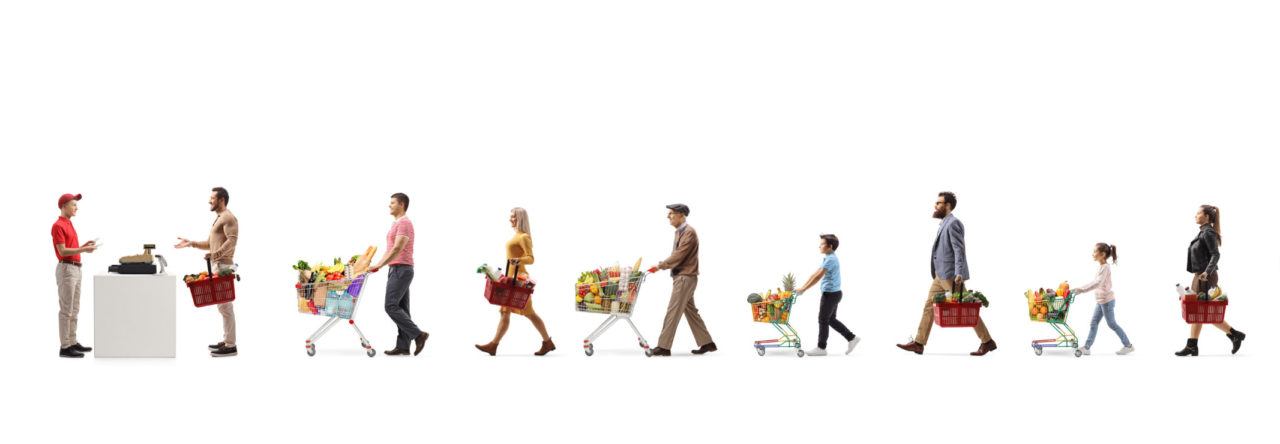
#81: Retail design is marketing too.
The message our store design sends isn’t just about organization and cleanliness; it should be a strong statement about selection, quality, pricing, friendliness, dependability, trustworthiness, and professionalism. The message should be consistent with and reinforce the image we’re working so hard and spending so much to build.
If the image we want is low prices, perhaps we need a store design of simple fixtures, open fluorescent lighting, piled-high displays, plenty of sale signs, and bustle and commotion. But that retail design works hard against us if the image we want is almost anything else—fashion, leisure fun, reliable performance, trustworthy expertise, safety and security….
We tend to ignore the message our retail design and display sends because we see it every day, but our customers cannot. They have trouble imagining fashion as the latest when our wallpaper is twenty years old, furniture as attractive when it’s stored on warehouse shelves, tools as reliable and safe when they’re displayed haphazardly, or musical instruments as fun when they’re stacked in their cases on shelves.
Retail design, décor, and display should be a careful and emphatic expression of our marketing message. Straddling the fence or being non-committal not only misses a valuable opportunity, it muddles customers’ understanding.

#86: You’re not in business if you’re not in show business.
Potential customers who aren’t aware we have what they’re looking for drive right by us to a store they believe does. As a result we can’t afford to waste any opportunity to show our product in its best light and impress upon customers the breadth and depth of our selection.
Superstores have proven the value of showing a lot of product. Most shoppers are willing to put up with crowds, distant parking, impersonal service, and long lines in exchange for the improved odds of finding what they’re looking for.
The essential of good retail display is making strong, well-planned and favorable impressions of what our stores stock.

#87: Merchandise is for sale, not for storage.
Customers believe what they see is what we’ve got. Asking insults the virility of half the population—if they don’t see it, we don’t have it.
Merchandise doesn’t sell in a stockroom—it gets ignored, damaged, lost, and stolen. If we have so many products that we can’t or don’t need to display them all, we probably have too many. We need to tune up our replenishment system and use the freed space and investment to broaden our offerings.
A store with relatively little inventory is bigger to the public than its larger competitors if it has more on display.
When we’ve made the investment, we should put it out, take credit for it, and let it sell.

#88: Maximize showrooms, minimize stockrooms.
The theory of selling from a showroom and delivering from a warehouse sounds attractive—the showroom has permanent retail displays that aren’t disrupted and the customer gets fresh in-the-box product.
But theory and reality seldom share perspectives. What’s in stock often doesn’t match what’s on display, frustrating customers and salespeople, and losing sales—because, as every retailer knows, customers always want what we don’t have.
When all merchandise is on the sales-floor salespeople sell what they’ve got, customers choose what’s available, and everyone is happy. If it creates a little chaos, that sells, too, since customers are reassured by the activity.
Eliminating stockrooms is usually not only feasible but more efficient. In most cases the only “back room” we need is for receiving—and it should be small enough to prevent storage.

#89: Nothing is beautiful in the wrong light.
Probably the most underrated and unappreciated element of retailing is lighting. Good lighting, strategically directed and focused, can turn slow sellers into bestsellers; dim, flat, misdirected, or unbalanced lighting can doom saleable products to the closeout bin.
Spotlights make all the difference in furniture, car, jewelry, and art showrooms; they bathe high-end products in flattering light, create sparkle and highlights, and draw focus. Carefully selected color temperatures enhance the colors of the merchandise.
(One of the challenges of focused lights is that when merchandise is moved the lights must be refocused—not difficult but often overlooked. One solution is defining retail display spaces with platforms and other fixed elements where the lights remain focused.)

#90: People like to do business where business is being done.
An empty parking lot, quiet store, idle employees, sparse merchandise, and excess space don’t instill confidence. Customers need assurance that they’re in the right place, looking at desirable merchandise at attractive prices, and making logical purchase decisions.
Customers, activity, background noise, plentiful merchandise, registers ringing, and a little commotion inspire action.
When customers sense others are buying, they’re inclined to buy also.
Retail Truths is available in print and Kindle at Amazon.com
